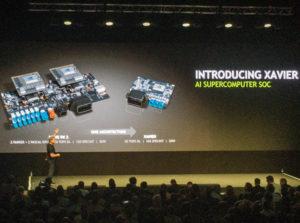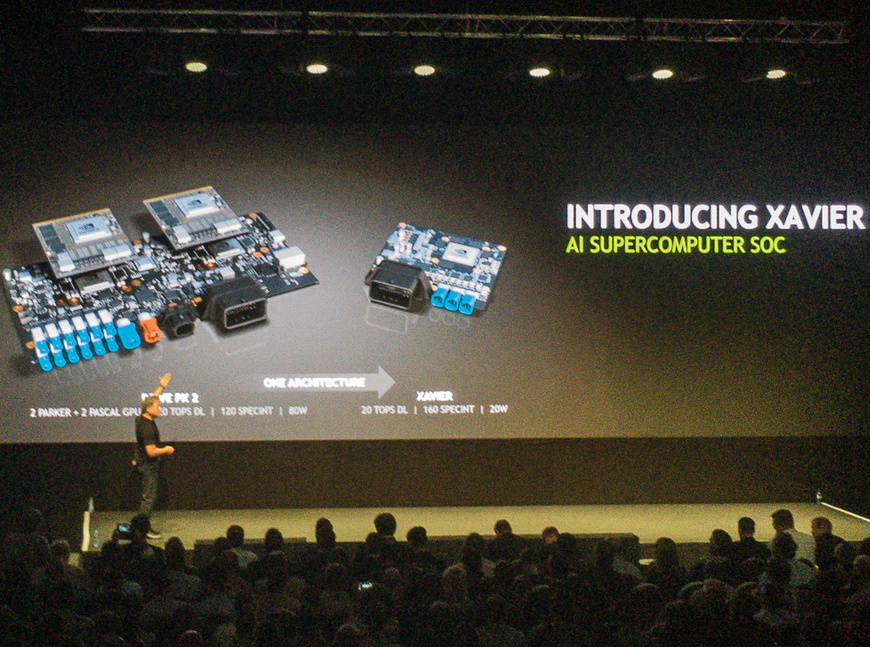In this video, Nvidia CEO Jen-Hsun Huang keynotes GTC Europe. The talk begins at the 2:35 minute mark.
 Today at GTC Europe, Nvidia unveiled Xavier, an all-new SoC based on the company’s next-gen Volta GPU, which will be the processor in future self-driving cars. According to Huang, the ARM-based Xavier will feature unprecedented performance and energy efficiency, while supporting deep-learning features important to the automotive market. A single Xavier-based AI car supercomputer will be able to replace today’s fully configured DRIVE PX 2 with two Parker SoCs and two Pascal GPUs.
Today at GTC Europe, Nvidia unveiled Xavier, an all-new SoC based on the company’s next-gen Volta GPU, which will be the processor in future self-driving cars. According to Huang, the ARM-based Xavier will feature unprecedented performance and energy efficiency, while supporting deep-learning features important to the automotive market. A single Xavier-based AI car supercomputer will be able to replace today’s fully configured DRIVE PX 2 with two Parker SoCs and two Pascal GPUs.
“This is the greatest SoC endeavor I have ever known, and we have been building chips for a very long time,” Huang said. “Just imagine what an autonomous vehicle can do in the near future with Xavier.”
Related news:
- The German Research Center for Artificial Intelligence and Switzerland’s Dalle Molle Institute for Artificial Intelligence will both be early users of the new NVIDIA DGX-1 AI supercomputer. DGX-1 packs some 170 teraflops of computing power, equal to 250 conventional servers, into a single box. It uses eight NVIDIA Pascal powered Tesla P100 accelerators, interconnected with high-speed NVIDIA NVLink technology, and includes a range of deep learning frameworks.
- SAP is now using DGX-1 AI supercomputers at its operations in Potsdam, Germany, and in Israel, where teams are building machine learning solutions for enterprises.
- DGX-1 has been adopted by AI labs around the world, including those based at UC Berkeley, Stanford University and OpenAI.
According to Huang, more than 1,500 startus worldwide are using GPU-powered AI:
- BenevolentAI, Nvidia’s first DGX-1 customer in Europe, is using AI to help medical professionals understand the vast amounts of medical research published every year.
- Smilart is using GPU-powered AI to analyze faces, even if their appearance has changed, or if an image is captured in low light or from a challenging angle.
- Intelligent Voice uses AI to not only recognize speech, but distinguish between speakers and even detect a speaker’s emotions.
- Sadako Technologies uses AI to train robots to sort trash. So far it has saved more than 60,000 tons of plastic from going to landfills.
GTC Europe concludes Sept. 29 in Amsterdam.




